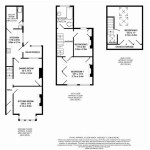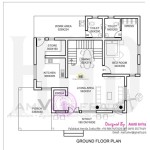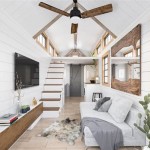Build Your Own Bat House Plans
Bats are beneficial creatures that play a crucial role in maintaining a healthy ecosystem. As insectivores, they consume vast quantities of insects, including agricultural pests and disease-carrying mosquitoes. Providing shelter for bats through bat houses can significantly contribute to their conservation and enhance the natural balance of your surroundings. Constructing a bat house is a rewarding project that can be accomplished with readily available materials and basic carpentry skills. This guide provides comprehensive plans and instructions to help you build your own bat house.
Choosing the Right Location
Selecting an appropriate location for your bat house is essential for attracting bats and ensuring their well-being. Consider the following factors:
- Sunlight: Bats prefer bat houses situated in areas that receive at least six hours of direct sunlight daily. This helps regulate the internal temperature of the house, making it ideal for roosting.
- Height: Mount the bat house at a height of 10-20 feet above ground level. This elevates it from potential predators and offers protection from foot traffic.
- Facing: Orient the bat house to face south or southeast. This maximizes sunlight exposure and provides warmth during the cooler months.
- Proximity to Water: Bats require access to water for drinking and bathing. Position the bat house within a reasonable distance to a water source, such as a pond, stream, or even a birdbath.
- Surrounding Vegetation: Plant trees or shrubs around the bat house to provide cover and a sense of security for bats as they approach their roost.
Materials and Tools
To build a bat house, you will require the following materials and tools:
- Wood: Use weather-resistant wood such as cedar, redwood, or pressure-treated lumber. Avoid using pine or other softwoods, as they are susceptible to decay and insect infestation.
- Screws: Choose exterior-grade screws that are long enough to securely fasten the wooden components.
- Saw: A hand saw, circular saw, or jigsaw is necessary for cutting the wood to size.
- Drill: A drill with a variety of drill bit sizes is required for pre-drilling pilot holes and securing screws.
- Measuring Tape: Essential for accurate measurement and cutting of the wood pieces.
- Level: Ensures that the bat house is constructed level and stable.
- Safety Gear: Wear safety glasses, gloves, and ear protection during construction.
Step-by-Step Construction Guide
Follow these steps to build a basic bat house:
- Cut the Wood: Measure and cut the wood according to the dimensions specified in the plan. You will need a front panel, back panel, two side panels, a roof, and a bottom panel.
- Assemble the Bat House: Secure the side panels to the front and back panels using screws. Then, attach the bottom panel to the assembled frame.
- Create Roosting Slots: Cut a series of horizontal slats or slots along the interior of the back panel. The slots should be 1/2-inch wide and 1-inch deep, spaced 1-inch apart. These slots provide roosting space for the bats.
- Attach the Roof: Construct the roof by joining two pieces of wood to form a gable shape. Attach the roof to the bat house using screws.
- Add Ventilation: Drill small ventilation holes near the top of the back panel to allow air circulation within the bat house.
- Prime and Paint: Apply a primer to the exterior of the bat house to seal the wood and prevent moisture damage. Afterwards, paint the bat house with a light-colored, non-toxic paint to reflect sunlight and reduce internal heat.
- Install the Bat House: Mount the finished bat house in the chosen location using a bracket or heavy-duty wire. Ensure the bat house is securely fastened to withstand strong winds or other weather conditions.
Tips for Attracting Bats
To increase the chances of attracting bats to your bat house, consider the following tips:
- Avoid Using Pesticides: Bats are sensitive to pesticides. Avoid using insecticides or herbicides in your yard, particularly near the bat house.
- Provide a Water Source: Make sure there is a reliable water source nearby, such as a pond, stream, or birdbath. Bats need water for drinking and bathing.
- Be Patient: It may take some time for bats to discover and occupy your bat house. Be patient and give them time to adjust to their new surroundings.
- Monitor the Bat House: Inspect the bat house regularly for signs of damage or infestation. Remove any debris or nests that may be present inside.

Bat House Plans Bird

Bat Houses Mass Gov

Build Your Own Bat House

Bat House Plans Diy

How To Build A Bat Box The Wildlife Trusts
:max_bytes(150000):strip_icc()/100things2do-f9ca25a5440247b3a11b57a2170c9f77.jpg?strip=all)
Free Bat House Plans You Can Build Today

Pin By Ana Silvia On Sobrevivência Bat House Plans Houses

37 Free Diy Bat House Plans That Will Attract The Natural Pest Control And Save Their Lives

37 Free Diy Bat House Plans That Will Attract The Natural Pest Control And Save Their Lives

Bat House Plans Florida Bright Idea 17 Diy Free Bluebird








